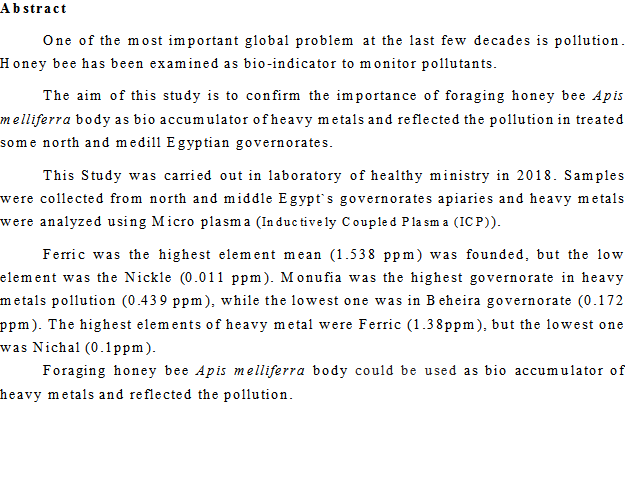
|
The Influence of Water/Diesel Emulsion on Performance, Combustion, and Emission Characteristics of Partially Premixed Charge Compression Diesel Engines
|
|
|
Medhat Elkelawy, Hagar Alm-Eldin Bastawissi, Mahmoud M. Shams
|
|
|
Department of Mechanical Power Engineering, Tanta University, Tanta, Egypt
|
|
|
medhatelkelawy@f-eng.tanta.edu.eg
|
|
|
41
|
|
|
Partially premixed charge compression ignition (PPCCI) engines are one of the advanced techniques, which give higher combustion, performance characteristics, and lower emissions comparing with the conventional direct injection diesel engines. PPCCI combustion has defect is the limited operating ranges due to the higher generated pressure and high heat release rate during the compression stroke. Due to the stringent exhaust emission, regulation standards of diesel engines on both passenger cars and light commercial vehicles following the transition from Euro 5 to Euro 6 demanded a significant reduction of nitrogen oxides (NOx) and particulate matters. The addition of water-in-diesel emulsion has invented plentiful interest, attentiveness as it lowers the peak flame temperature inside the combustion chamber by acting as heat sink that directly fosters the low-level of the NOx formation and PM emissions simultaneously. In this research, water-diesel emulsions fuels are used at different concentrations of water are 3%, 6% and 9% which can decrease the combustion pressure and temperature and therefore expand the load operating ranges of the engine. Four-stroke single cylinder diesel engine has used in the experiments after a required modification to work in PPCCI engine mode. From the results, the water-diesel emulsion in PPCCI engines has good influence in increasing the load operating ranges and reduction in all emission characteristics than PPCCI engines using 100% pure diesel fuel only.
|
|

|
Heavy metal in honeybee worker's body samples throw some north and meddle Egyptian governorates
|
|
|
1Sherif, A. S. F. 2Haitham Ramadan. Dina Mohammed Taksira 1Marwa, and 1B. M. Gomaa
|
|
|
1. Plant Protection Research Institute, Agricultural Research Centre, Giza, Egypt 2. Plant Protection Department, Faculty of Agriculture, Tanta University, Egypt
|
|
|
dr.honye@yahoo.com
|
|
|
43
|
|
|
One of the most important global problem at the last few decades is pollution. Honey bee has been examined as bio-indicator to monitor pollutants.
The aim of this study is to confirm the importance of foraging honey bee Apis melliferra body as bio accumulator of heavy metals and reflected the pollution in treated some north and medill Egyptian governorates.
This Study was carried out in laboratory of healthy ministry in 2018. Samples were collected from north and middle Egypt`s governorates apiaries and heavy metals were analyzed using Micro plasma (Inductively Coupled Plasma (ICP)).
Ferric was the highest element mean (1.538 ppm) was founded, but the low element was the Nickle (0.011 ppm). Monufia was the highest governorate in heavy metals pollution (0.439 ppm), while the lowest one was in Beheira governorate (0.172 ppm). The highest elements of heavy metal were Ferric (1.38ppm), but the lowest one was Nichal (0.1ppm).
Foraging honey bee Apis melliferra body could be used as bio accumulator of heavy metals and reflected the pollution.
|
|

|
Numerical Investigation on the Effects of Carbon Dioxide Percentage in Biogas Fuel Combustion Characterization
|
|
|
Medhat Elkelawy 1, Ahmed Abou-elyazied Abdelhafez2, Hagar Alm-Eldin Bastawissi1, Saad Mostafa El_Malla3
|
|
|
Dep. of Mech. Power Eng., Faculty of Eng., Tanta University, Tanta, Egypt
|
|
|
medhatelkelawy@f-eng.tanta.edu.eg
|
|
|
48
|
|
|
The Biogas is a renewable fuel, which can be formed naturally from biological material, under anaerobic conditions, ssuch as fossil natural gas. The main component of biogas is flammable methane, which is the main determinant of the energy content of biogas. Biogas components are divided into combustible methane gas and non-combustible components such as carbon dioxide. The presence of carbon dioxide in biogas have many negative effects on the thermal and fuel combustion properties, in which CO2 play a role of mitigation combustion gas, thus reducing flame temperature, reducing the burning speed and flame instability. The combustion and heat release characteristics of biogas were performed with CHEMKIN-PRO software package using GRI mesh. The chemical kinetic mechanism of the biogas fuel has consists of several species, in which the approximate species consisted from 53 chemical species and 325 elementary reactions. Thae obtained result showed that the combustion and heat release of biogas decrease with increasing CO2 addition ratio, leading to a shorter of biogas flame length. Increased methane content in biogas causes high reaction rate, enhance combustion, and heat release characteristics of biogas.
|
|

|
Effect of Varying the Inlet Temperature and Equivalence Ratio on Combustion, Performance, and Emission Characteristics of HCCI Diesel Engine with Different Diesel/Biodiesel Dose
|
|
|
A. E. Kabeel, E. A. ElShenawy, Medhat Elkelawy, Hagar Bastawissi, Mahmoud M. Elshanshoury
|
|
|
Mechanical Power Eng. Dept. Faculty of Engineering, Tanta University, Egypt
|
|
|
medhatelkelawy@f-eng.tanta.edu.eg
|
|
|
51
|
|
|
Homogeneous Charge Compression Ignition (HCCI) is a progressive combustion technology used for internal combustion engines because of the potential for giant fuel conversion efficiency and enormously low particulate matter (PM) and Nitrogen Oxides (NOx) emissions. In HCCI engines, there is no direct control technique for auto ignition time. A communal method to indirectly control the ignition timing in HCCI combustion engines is altering parameters of the engine, which can affect the combustion. This paper presents the effect of varying the value of inlet temperature of air-fuel mixture on combustion, performance and emissions of HCCI diesel engine. In this paper, a parametric study on HCCI combustion fueled with Diesel/Biodiesel blends (20%, 30% and 40%) is conducted to identify the effect of equivalence ratio values (0.15, 0.2, 0.3, and 0.4) on combustion and HCCI engine performance parameters. The obtained results of the simulation work show that the value of maximum in-cylinder temperature and in-cylinder pressure increase due to increasing the inlet temperature, but the combustion duration reduces. Also, the results show that by increasing biodiesel blend, the value of maximum in-cylinder temperature and in-cylinder pressure decrease, but the combustion duration increases.
|
|

|
Oxidation of azo dye Orange II with hydrogen peroxide catalyzed by 5,10,15,20-tetrakis[4-(diethylmethylammonio)phenyl]porphyrinato-cobalt(II) tetra iodide in aqueous solution.
|
|
|
S. H. Elkhalafy*, M. T. Hassanein, M. F. Abd-Elal, A. A. Atia
|
|
|
Tanta University
|
|
|
saharelkhalfy@hotmail.com
|
|
|
67
|
|
|
The catalytic oxidation of the azo dye Orange II by hydrogen peroxide in aqueous solution has been investigated using the cobalt(II) porphyrin complex 1 as catalyst in which The quaternary ammonium groups of the cationiccobalt(II) porphyrin complex 1 serve binding of the anionic dye Orange II to the catalyst, which provides a higher concentration of the dye at theactive sites. This probably could increase the efficiency of the oxidation process. . The factors that may influence the oxidation of Orange II, such as the effect of reaction temperature, concentration of catalyst, hydrogen peroxide and orange II have been studied. The results of total organic carbon analysis showed 52% of dye mineralization under mild reaction conditions. Residual organic compounds in the reaction mixture were identified by using Gas chromatography-mass spectrometry. Decolonization of Orange II by H2O2/ cobalt(II) porphyrin complex 1 involved the formation and participation of hydroxyl radicals as the active species.
Keywords: Orange II, Oxidative degradation, Cationiccobalt(II) porphyrin complex, Hydrogen peroxide.
|
|

|
Effect of using formic acid as an oxygenated additive in compression ignition engine fueled with algae biodiesel blends
|
|
|
Medhat Elkelawy@, E. A. El Shenawy*, Hagar Alm-Eldin Bastawissi**, Mohammed Taha&
|
|
|
Tanta University, Faculty of Eng., Mechanical Power Eng. Department, Tanta, Egypt
|
|
|
medhatelkelawy@f-eng.tanta.edu.eg
|
|
|
76
|
|
|
Energy demand has become one of the most important challenges facing the world these days. The large population increase led to an increase in energy demand, especially conventional energy sources. These sources are the main nerve in transportation and industrial operations. As a result of concerns about the depletion of conventional energy sources, researchers have turned to alternative energy sources, one of the most important and effective alternative sources is biodiesel. Current study investigates the use of formic acid CH2O2 as an oxygenated additive in diesel engine fueled with B50 (50% diesel and 50% biodiesel). The effect of each concentration of formic acid added to diesel and bio-diesel mixtures was investigated to choose the best concentration which gives the best fuel enhancement. The effect of these concentrations on the engine performance which represented in Brake specific fuel consumption (BSFC), Brake thermal efficiency (BTE) and emissions (i.e., CO, CO2, HC, NOx, …. ).
|
|

|
Converting a Conventional Vehicle into a Hybrid–Electric Vehicle in order to Improve Fuel Economy and Emission Characteristics
|
|
|
Medhat Elkelawy1*, Hagar Alm-Eldin Bastawissi1, Ahmed Samy Safwat1
|
|
|
Mechanical Power Engineering Departments, Faculty of Engineering, Tanta University, Tanta, Egypt
|
|
|
medhatelkelawy@f-eng.tanta.edu.eg
|
|
|
77
|
|
|
Nowadays most of automotive companies are interested in electrical power train and the technical strategies to use it to get better performance, lower fuel consumption, and enhance the emission characteristics. Those, hybrid electric vehicles are a good solution in which the electrical motor in addition to an internal combustion engine to drive the vehicle with no need to stop the vehicle for charging batteries. This paper aims at study the effects of converting a small hatchback car with 1.3L gasoline engine to a serial type of Hybrid–Electric Vehicle (HEV). The system depends on a 10kW electric motor to drive the care wheels of the vehicle and uses a 150 cc gasoline engine to generate a 5.5 KVA to charge the electric batteries. The driving electric motor has supplied with the 96V, 100 Ah battery kit. The obtained results have been achieved on road tests before and after conversion to calculate the fuel consumption and analyze the exhaust gases emissions characteristics. Results show a great improvement for fuel consumption and emissions due to use the gasoline engine as an electric generator for the hybrid system. The engine is running at constant speed and constant load, which give a maximum efficiency.
|
|

|
Experimental Study on the Performance and Emission Characteristics of Diesel Engine Fueled with WCO Biodiesel/Diesel Blends
|
|
|
Medhat Elkelawy, E. A. ElShenawy, Magda Kotb El-fakharany, Hagar Alm-Eldin Bastawissi, Mohamed Mostafa Shafey
|
|
|
Department of Mechanical Power Engineering, Faculty of Engineering, Tanta University, Egypt
|
|
|
medhatelkelawy@f-eng.tanta.edu.eg
|
|
|
84
|
|
|
Biodiesel and its blends with diesel fuel are investigated to solve the problem of depletion of fossil fuels and environmental impact. Biodiesel was produced from waste cooking-oil by transesterification process. Blends of waste cooking-oil biodiesel and diesel oil were prepared in volume percentages of 20, 40, 60, 80, and 100% as B20, B40, B60, B80 and B100, respectively. Diesel engine performance and exhaust emissions were studied experimentally for burning of the waste cooking-oil blends with diesel fuel. This experimental was applied on a single cylinder diesel engine at different engine loads from zero to full load. The obtained results show that, thermal efficiencies for waste cooking-oil biodiesel blends were lower than diesel oil. Specific fuel consumptions of biodiesel blends were higher than diesel fuel. Higher exhaust gas temperatures were recorded for biodiesel blends compared to diesel oil. CO2 emissions for waste cooking-oil biodiesel blends were higher than diesel oil. CO and HC emissions for biodiesel blends were lower than diesel fuel. NOx emissions for biodiesel blends were higher than diesel fuel.
|
|

|
Influence of Ternary Fuel Blends of Diesel/Biodiesel/Ethanol on the Performance and Emissions Characteristics of Diesel Engines
|
|
|
Medhat Elkelawy, Abd Elnaby Kabeel, E. A. El Shenawy, Hagar Alm-Eldin Bastawissi, Ahmed Elbanna
|
|
|
Department of Mechanical Power Engineering, Faculty of Engineering, Tanta University, Tanta, Egypt
|
|
|
medhatelkelawy@f-eng.tanta.edu.eg
|
|
|
85
|
|
|
This research aims to study the effect of adding ethanol to diesel blend with biodiesel and the use of triple mixture in diesel engines. A single cylinder water cooled diesel engine operating at fixed speed of 1600 rpm with variable loads was utilized to perform experimental tests. The investigations were achieved using a blend of Diesel/biodiesel fuels of B50 (50 % biodiesel and 50 % commercial diesel fuel by volume). The diesel/biodiesel blend B50 was mixed with three different concentrations of the ethanol E2, E4, and E6, which represent 2%, 4%, 6% ethanol by volume, respectively. The results of these fuels were compared with those of pure diesel so that we could assess engine performance and exhaust emissions from the engine due to the use of these fuel additives. It was concluded that the BTE of this engine decreased lightly as a result for the use of ethanol with the diesel-biodiesel blend. However, the BSFC increased compared to the results of using diesel fuel. Nitrogen oxides (NOx) emissions decreased significantly compared to the results obtained from the use of diesel fuel. But for the unburned hydrocarbon (HC) inside the engine cylinder and carbon monoxide (CO) exhaust emissions appeared more than in the case of diesel fuel, this was the result of incomplete combustion within the engine cylinder and low combustion temperature. Finally, it can be concluded that the performance of the diesel engine due to the addition of ethanol to the diesel mixture with biodiesel has a comparable performance to the pure diesel fuel for the engine.
|
|

|
Experimental Investigation on Spray Characteristics of Waste-Cooking-Oil Biodiesel/Diesel Blends at Different Injection Parameters
|
|
|
Medhat Elkelawy, Hagar Alm-Eldin Bastawissi, E. A. ElShenawy, Salma khalaf Abd Almonem
|
|
|
Mechanical Power Engineering Departments, Faculty of Engineering, Tanta University, Tanta, Egypt
|
|
|
medhatelkelawy@f-eng.tanta.edu.eg
|
|
|
86
|
|
|
Biodiesel is a promising alternative solution for energy crises, as it is renewable, biodegradable, non – toxic and fully competitive with petrol diesel in most technical aspects. Also, for the increase in global energy demand, consumption of nonrenewable fossil fuels, exhaust emissions, all these led to search about alternative fuels. Biodiesel was produced from waste Cooking-oil by transesterification process have been applied for the most countries to improve and raise the national energy return. Blends of waste-cooking-oil biodiesel with the commercial diesel #1 fuel were used instead of pure diesel fuel. However, the spray characteristic of the injected fuel depends on different parameters such as fuel injection pressure, the temperature of the injected fuel, ambient pressure, fuel viscosity, and fuel density. In this work, the spray characteristics of the diesel/ biodiesel blends fuel were studied experimentally at different injection pressure and temperature. Spray characteristics of biodiesel WCOB/diesel under various injection pressures of 150 to 300 bar and injection temperature of 25 to 275 ºC have been measured and illustrated by sparing the fuel blends in a surrounding area using a high-speed Digital camera. In this work the biodiesl/diesel blends of B40D60 has been tested. The experimental data shows the WCOB biodiesel of B40D60 gives longer spray tip penetration and spray angle are smaller than those of diesel fuels at different pressure and temperature.
|
|
.jpg)
|
Water Quality Monitoring of Lake Burullus (Egypt) Using Landsat Satellite Imageries
|
|
|
A. Mohsen, M. Elshemy and B. A. Zeidan
|
|
|
Faculty of Engineering, Tanta University, Tanta, Egypt
|
|
|
ahmed_mohsen250@f-eng.tanta.edu.eg
|
|
|
106
|
|
|
Lake Burullus is one of the most important coastal lakes in Egypt, as it participates with a considerable amount of fish yield in Egypt. Despite its importance, it is considered as a vulnerable lake, whereas it is subjected to significant environmental changes caused by various anthropogenic activities. Severe deterioration of its water quality status, as well as a decrease in its water area has been noticed throughout the last four decades. The main objective of this study is to evaluate the ability of remote sensing technique for assessing the water quality status of the lake for the period from 2010 to 2013. Remote sensing technique was used to retrieve and predict the lake water quality parameters records through the assessment period. The results revealed the critical state of water quality conditions of the lake, particularly the southern and southeastern parts of the lake. The results showed also that some water quality parameters (Chl-a, TSS, pH, Fe, Zn, Cr, and NH4) can be retrieved from remote sensing imageries with reasonable accuracy (R2=0.86, 0.67, 0.65, 0.63, 0.62, 0.61 and 0.6, respectively). Water quality parameters which can be predicted, based on calibrated and validated regression models are TSS, Chl-a, NH4, and Zn, with acceptable accuracy (R2=0.6, 0.43, 0.31 and 0.3, respectively). The eutrophication condition of Lake Burullus can be classified as Eutrophic to Hyper-eutrophic; according to Carlson index, which was calculated based on the derived Chl-a model. Lake Burullus needs urgent planes and strategies to protect its water quality from the potential hazards of human activities. In spite of the acceptable accuracy of remote sensing technique, it proved its ability as a cheap and effective technique to monitor the changes in water quality conditions of shallow coastal lagoons.
|
|

|
Performance Analysis of a Solar Energy Based Hybrid Desiccant Air Conditioning Systems
|
|
|
M. M. Bassuoni
|
|
|
Environmental Pollution
|
|
|
mohamed_mahgoub@f-eng.tanta.edu.eg
|
|
|
110
|
|
|
Objectives: The performance analysis of a solar energy based hybrid desiccant air conditioning systems using nanomaterials is studied. The desiccant system is regenerated using solar heater to save energy. Methods/Analysis: A mathematical model of a hybrid desiccant air conditioning for the proposed arrangements A and B is studied. An energy and exergy analysis is used to describe the performance of the proposed system. Some system evaluating variables like system ECOP, overall exegry efficiency and exergy destruction are studied at typical operating conditions. The obtained results from the introduced system are compared to VCS. Findings: At a specific operating and design conditions, an average increase of about 45.8 % in ECOP of the proposed system is achieved compared to VCS. The second law overall efficiency reaches 39.6 % at a certain conditions (RH=66% TA1=41.6°C) while it reaches 40.3% for VCS. There is an amount of total energy saving of 33.8% compared to a traditional VCS for a cooling unit of nearly 22.5 kW. Application/Improvements: Reduction in energy consumption leads to use this technology in air conditioning applications to save energy. Due to this performance the proposed system has high application potential in Saudi Arabia market.
|
|

|
Optimization of renewable energy in the sugar industry
|
|
|
Dr. Eng. Ali A. Ghali
|
|
|
Delta Sugar Company, Egypt
|
|
|
alyghalydsc@yahoo.com
|
|
|
119
|
|
|
Sugar companies seek to maximize the use of renewable energy available to them in the applications of the sugar industry. According to development in technological biological process, renewable energy in sugar factories will be available, resulting from the output of the sugar industry such as industrial waste water treatment and fermentation of sugar beet pulp processing , these process produce biogas which uses in combined heat and power cycle (CHP) to produce energy and steam. The sugar beet pulp fermentation residue process (digestate) contains a lot of nitrogen, potassium plus other macro- and microelements which accordance with the requirements that permit its application as a fertilizer in sugar-beet growing area. This study indicates the utilization output of sugar industry in renewable energy which maximizing the performance of sugar factories and makes sugar industry more economical in addition to environmental compatibility.
Key words:
Renewable energy, sugar, biogas, industrial waste water, beet pulp, environmental
|
|

|
BAGASSE COMBUSTION FOR MOLASSES PROCESSING UNIT A CASE STUDY
|
|
|
T. H. Ghanem, M. M. Badr, M. M. Geasa and A.H.Elhelally
|
|
|
هندسة زراعية
|
|
|
aly_elhelally25@yahoo.com
|
|
|
204
|
|
|
تنتشر وحدات تصنيع المولاس في جنوب مصر في مناطق زراعة القصب، ويصنع المولاس عن طريق تركيز عصير قصب السكر في قيزانات مفتوحة حيث يتم تسخين هذه القيزانات من أسفل عن طريق حرق مصاص القصب (الباجاس) الذي يتخلف عن عمليات العصير. ويهدف البحث إلي إجراء دراسة حالة في قريتي الروضة وديرمواس التابعتين لمركز ملوي داخل حزام القصب في الوجة القبلي لتحديد طبيعة الباجاس المحروق والتلوث الناتج من غازات عملية الحرق وبعض المؤشرات الهندسية لأفران تصنيع المولاس. وأوضحت التجارب أن نسبة تصاعد أول اكسيد الكربون تزيد في المصنع الأول والمصنع الثاني والمصنع الثالث بنسبة 4.5 ، 8.9 ، 24 مرة علي الترتيب عن الحدود المسموح بها من قبل قوانين البيئة المصرية. كما اوضحت التجارب أيضا أن الباجاس المستخدم كوقود تتراوح نسب الرطوبة به ما بين 12 الي 35% علي أساس رطب، وقد اتضح أن بعض المصانع تستخدم الإطارات المطاطية لتسخين ورفع كفاءة عملية الإحتراق مما يؤدي إلي زيادة التلوث وعلي الأخص غاز ثاني أكسيد الكبريت السام وخارج نطاق الحدود المسموح بها حسب قوانين البيئة المصرية.
|
|

|
Assessment of Ecological Quality of Burullus Lagoon Sediments Using Recent Benthic Foraminifera (Rhizaria)
|
|
|
A. M. Badr-ElDin, A. A. El-Badry, O. H. Orabi
|
|
|
Oceanography Department, Faculty of Science, Alexandria University; National Institute of Oceanography and Fisheries, Aswan Research Station; Geology Department, Faculty of Science, Menoufia University
|
|
|
ahmed.badreldin@alexu.edu.eg
|
|
|
213
|
|
|
The Burullus Lagoon lies in the northern Nile Delta region and experiences severe environmental stress due to the continuous overflow of untreated industrial, domestic and agricultural effluents. The present investigation studied the foraminiferal assemblage responses to environmental stress in Burullus Lagoon to evaluate the validity of biomonitoring the ecological quality of the brackish coastal lagoons of the Nile Delta using benthic foraminifera. A total of fourteen sediment samples were collected during 2014. Percentages of organic matter (OM) and heavy metals (HM) concentrations (Cu, Cd, Zn, Pb, Co, Ni, and Fe) were determined. Five pollution indices were used for the environmental assessment of Burullus Lagoon sediments. The foraminiferal community structure and distribution were studied whereas foraminiferal indices (species diversity and Foraminiferal Abnormality Index, FAI) were evaluated.
The Burullus Lagoon sediments were characterized by high organic matter and heavy metals concentrations. Results of Pollution Load Index (PLI) and Degree of Contamination (Dc) showed that the lagoon sediments had a very high degree of contamination at all stations. Species richness was low in all samples and dominated mainly by the tolerant euryhaline species Ammonia tepida. The lowest diversity and the scarcity of living foraminiferal individuals existed in lagoon sectors characterized by low salinity, high OM and HM concentrations. There is a concomitant increase in FAI in accordance with the dramatic increase in HM contents particularly Cadmium. The current study proved that benthic foraminifera is a valid technique to assess the environmental quality at the brackish coastal ecosystems of the Nile Delta.
|
|

|
Removal of organic dye from wastewater using magnetic nanoparticles
|
|
|
N.AboSeada , M.A.Ahmed , M. ElMahgary
|
|
|
The British University in Egypt , Ain Shams Universty
|
|
|
nour_aboseada@hotmail.com
|
|
|
257
|
|
|
The disposal of toxic dyes and colored effluents into water surface have numerous negative effects to the human beings and aquatic ecosystem. Photocatalysis is regarded as a boosting technology for removal of organic dye pollutants from wastewater through formation of reactive radicals that is responsible for complete destruction of dyes into friendly non-toxic species. In this research, SnO2 as thermal stable, exhibits high surface area and definite pore structure was synthesized by sol-gel route using micelle template approach for removal of indigo carmine dye as famous industrial dye. Various proportions of Fe3O4 as promising magnetite were incorporated on the surface of tin oxide by ultrasonic route to shifting the photocatalytic response to visible region and facilitate the collection of the solid catalyst after the degradation process. The physicochemical properties of the prepared nanoparticles were investigated by X-ray diffraction [XRD], field emission scanning electron microscope [FESEM], transmission electron microscope [HRTEM], diffuse reflectance spectra [DRS] and Fourier transformer infra-red [FTIR]. The photocatalytic reactivity of the prepared nanoparticles in removal of indigo carmine was estimated under UV and visible light radiations. The nature of reactive species responsible for dye degradation were monitored by scavenger capture experiments.
|
|

|
Water and food security assessment under water pollution and climate change stresses
|
|
|
Abdalmonem Alkhawaga; Mohamed Elshemy; Bakenaz Zeidan; Ahmed Elshinnawy
|
|
|
Faculty of Engineering, Tanta university
|
|
|
abdalmonem_alkhawaga@f-eng.tanta.edu.egassess
|
|
|
261
|
|
|
Egypt faces great challenges to secure its freshwater quota. The expected shortage in freshwater will significantly affect the Egyptian water and food security. A regular assessment of water security elements for all Egyptian governorates is essential. In addition to the freshwater shortage, climate change is considered as the main threat especially for Egyptian coastal areas, such as Kafr El-Sheikh governorate, which was selected as the case study for this work. The aim of this work is to quantify the impacts of climatic changes on the agricultural sector of Kafr El-Sheikh Governorate.
Combined scenarios of four aspects including: 1) impacts of CC on irrigation water requirements, 2) SLR, 3) impacts of CC on fresh water share of the governorate and 4) urban sprawl trend were generated and investigated. Moreover, water quality status of irrigation water represented by salinity were studied under each scenario. Impacts of salinity of crop yield productivity for four main crops of the governorate were also explored. An urgent integrated plan for the coastal Egyptian governorates to manage the future climate change impacts is essential.
|
|

|
Textile Wastewater Treatment by Electrocoagulation Cell Powered by Solar Energy
|
|
|
A.E. Kabeel1 , Mohamed Abd Elgaied , M.H.A Amr2, A.A. Bastawissi
|
|
|
Faculty of Engineering, Tanta University, Egypt Tanta Higher Institute of Engineering and Technology (THIET) , Egypt
|
|
|
aalmeldin80@gmail.com
|
|
|
270
|
|
|
The present study deals with the treatment of some real textile wastewater in a batch electrocoagulation (EC) cell powered by solar energy followed by decantation in the same cell without addition of flocculating agents. EC is based on electrochemical technology and does not require chemicals addition, hence avoids the formation of secondary pollutants. The use of solar energy as the power source for the EC cell makes the whole treatment process ecofriendly. The effects of the EC parameters; initials PH of the wastewater, applied current density, treatment period, and electrodes material in addition to the decantation period on removal of Chemical Oxygen Demand (COD), Suspended Solids (SS) and turbidity are investigated. The treatment process is more efficient with higher current densities and long treatment periods. Iron electrodes are more efficient for the treatment of textile wastewaters and higher initial PH values are favorable. With iron electrodes; about 96% of turbidly, 15% of SS and 77% of COD removal is obtained with typical operation conditions; 100 Am-2 current density, 120 min operating time, initial PH9 and one hour decantation period. The EC setup described in this study is simple in design, operation and can be used in rural regions where electricity is not easily available or expensive.
|
|

|
Novel Sensors for Environmental Pollutants Detection
|
|
|
Ziad Khalifa
|
|
|
Faculty of Engineering, The British University in Egypt
|
|
|
ziad.khalifa@bue.edu.eg
|
|
|
1358
|
|
|
Heavy metal ions coming from both natural and anthropogenic sources dramatically contribute to environmental pollution and constitute a serious threat for human health, especially considering its non-biodegradable character and the tendency to bioaccumulate and biomagnificate. Heavy metal ions coming from both natural and anthropogenic sources dramatically contribute to environmental pollution and constitute a serious threat for human health, especially considering its non-biodegradable character and the tendency to bioaccumulate and biomagnificate. Incorporation of nanomaterials and nanostructures into conducting polymers leads to significant improvement in its performance in terms of sensitivity, selectivity, multiplexed detection capability and portability. In this context, electropolymerized poly (1, 5-diaminonaphthalene) at glassy carbon electrode, doped with nickel nanoparticles were fabricated. This modified electrode was characterized by electrochemical techniques, scanning electron microscope and energy dispersive X-ray. The invented nanostructures have demonstrated ability to significantly enhance detection capabilities of copper, cadmium and lead metal ions in water samples using square wave anodic stripping voltammetry technique. The design features indicate that these sensors can be potentially used as portable instrumentation with a high sensitivity and low detection limits. In these regrrds, electrochemical sensors, alone or integrated into sensor arrays, can be a valuable alternative to ICP methods.
|
|

|
Investigation of saltwater intrusion in the Nile Delta aquifer considering different scenarios including climate change
|
|
|
Asaad M. Armanuos1, Mona Gamal Eldin Ibrahim2, Wael Elham Mahmod3 Abdelazim Negm4, Jiro Takemura5 and Chihiro Yoshimura6
|
|
|
1 Assistant Professor, Irrigation and Hydraulics Engineering Department, Faculty of Engineering, Tanta University, asaad.matter@f-eng.tanta.edu.eg 2 Dean of School of Energy Resources, Environmental and Chemical & Petrochemical Engineering, Egypt-Japan University of Science and Technology, Email: mona.gamal@ejust.edu.eg 3Environmental Engineering Department, School of Energy Resources, Environmental and Chemical & Petrochemical Engineering, Egypt-Japan University of Science and Technology, E-JUST, Alexandria, Egypt, Email: wael.elham@ejust.edu.eg 3Civil Engineering Department, Faculty of Engineering, Assiut University, 71515 Assiut, Egypt, Email: wdpp2006@aun.edu.eg 4Prof of hydraulics, Faculty of Engineering, Zagazig University, Egypt, Email:amnegm@zu.edu.eg 5Dr. of Eng., Associate Professor, Dept. of Civil Engineering, Tokyo Institute of Technology(2-12-1 Oookayama, Meguro, Tokyo 152-8552, Japan), Email: jtakemur@cv.titech.ac.jp 6Dr. of Eng., Associate Professor, Dept. of Civil Engineering, Tokyo Institute of Technology(2-12-1 Oookayama, Meguro, Tokyo 152-0033, Japan, Email: yoshimura.c.aa@m.titech.ac.jp
|
|
|
asaad.matter@f-eng.tanta.edu.eg
|
|
|
1387
|
|
|
Saltwater intrusion is considered to be a major problem in coastal groundwater aquifers. Increasing the groundwater pumping rate enhances saltwater intrusion in coastal aquifers. In Egypt, the Nile Delta aquifer is highly vulnerable to saltwater intrusion from Mediterranean Sea. The main objective of this study was to build an integrated three-dimensional groundwater model, including all branches of the irrigation network and their recharges into the Nile Delta aquifer. The model was built by using the SEAWAT program. The model validation was achieved by comparing its results with the observation data and results from previous models. Three scenarios were proposed considering: 1) sea level rise, 2) changes in the rate of groundwater pumping, and 3) a combination of the conditions of the previous two scenarios. A rise in sea levels by 25, 50, 75 and 100 cm caused additional saltwater intrusion to distances of 5.11 km, 7.10, 7.62 and 8.2 km, respectively. Moreover, compared with the base case, a decline in the groundwater head in the lower boundary by 25, 50, 75 and 100 cm caused the saltwater to advance further inland to distances of 5.30, 5.47, 5.52 and 5.75 km, respectively. The third scenario proved to be the worst case, in which saltwater intrusion increased to a distance of 7.22, 7.73, 8.20 and 10.20 km, respectively. Compared with previous model studies, the results showed that saltwater intrusion length decreases by 4.0 km after including all branches of the irrigation network.
|
|

|
Performance and Emissions Characteristics of a Diesel Engine Running with Waste Cooking Oil Biodiesel Blends
|
|
|
Saeed M. Belal1,*, Yehia A. Eldrainy2, A. H. Elbatran3 and Adel A. Abdel-Rahman2
|
|
|
1Department of Mechanical Engineering, Faculty of Engineering and Technology, Arab Academy for Science and Technology and Maritime Transport, Alexandria, Egypt 2Mechanical Engineering Department, Faculty of Engineering, Alexandria University, Alexandria, Egypt 3Department of Marine Engineering, Faculty of Engineering and Technology, Arab Academy for Science and Technology and Maritime Transport, Alexandria, Egypt
|
|
|
tuef.EnvPl@unv.tanta.edu.eg
|
|
|
1423
|
|
|
Nowadays interest increased in renewable alternative such as biodiesel, bioethanol, blended fuels. These alternatives should be examined in real engines to evaluate its effect on engine performance and emissions. Therefore, the objective of this research is to experimentally test a diesel engine performance and emissions using a mixture of waste cooking oil biodiesel and diesel fuel in different blending ratio B5, B10, B15 and B20. This experimental test was applied on a single cylinder, 4-stroke, air cooled, and direct injection diesel engine test rig model GUNT-CT100.22. The test was performed at constant speed of 2000 rpm and variable loads of 3, 6, 9 and 12 N.m. The results showed that B5 reached the highest peak pressure because waste cooking biodiesel involved considerable increase in inherent oxygen atoms content in contrast to pure diesel fuel under full load operation. Bsfc of biodiesel blends increased with increasing the waste cooking oil percentage. This increase was attributed to bad atomization, volatility, vaporization and mixing fuel-air process of waste cooking oil biodiesel blends. NOx emissions for biodiesel blends were increased with increase of waste cooking amount and this was owing to considerable increase in inherent oxygen atoms content, combustion temperature. In addition, CO emission that emitted from biodiesel blends were decreased as a result of rich oxygen content of biodiesel .
|
|
|